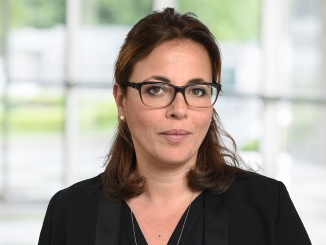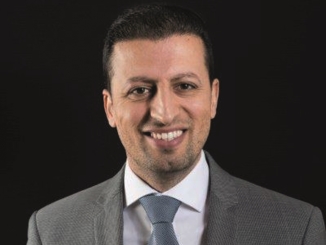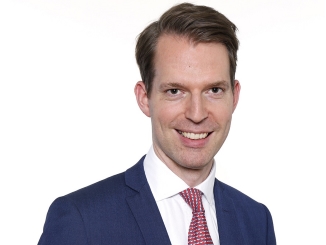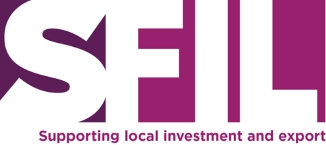
Public sector issuers are at the forefront of green and social bond markets as they seek to support society in transitioning, justly, to a sustainable future. Demand is buoyant, supported by regulatory developments, but challenges remain, notably in determining appropriate standards on the social side. Sustainabonds gathered leading players to tackle the key issues facing the sector in a roundtable discussion finalised in mid-February.
A pdf of the roundtable can be downloaded here.
Roundtable participants:
Mehdi Abdi, head of fixed income, Actiam
Orith Azoulay, head of the green and sustainable hub, Natixis
Ralf Berninger, head of investor relations and sustainability, SFIL
Felix Grote, head of long term funding operations, Council of Europe Development Bank (CEB)
Antti Kontio, head of funding and sustainability, Municipality Finance (MuniFin)
Théo Kotula, ESG/responsible investment analyst, Axa Investment Managers
Neil Day, managing editor, Sustainabonds, and moderator
Neil Day, Sustainabonds: How would you characterise the development of the green, social and sustainability bond markets in the last year and the relative performance of its sub-sectors, particularly the social market, after it experienced such a boom the previous year?
Orith Azoulay, Natixis: In 2021, global annual supply in the green, social, sustainable and sustainability-linked bond (SLB) market almost reached the trillion US dollars-equivalent landmark, showing 60% overall growth year-on-year. Total outstandings of G&S bonds have reached €1.75tn-equivalent, up 70% versus end-2020. The US is now the third largest issuer of G&S bonds by country of domicile, after supras and France. To put these trends into perspective, a couple of figures: 26% of euro-denominated bonds, excluding govvies, were issued in G&S formats in 2021! (versus 17% in 2020). G&S “credit” now represents 8.5% of total euro bonds outstanding and almost 1.5% of US dollars outstanding. From a sub-segment perspective, we would underline in particular the consolidation of the 2020 trend in social bonds (with $181bn of supply in 2021, up 28% year-on-year), but also the extremely rapid take-off of the SLB market.
The unexploited potential of the social bond market is tremendous, especially in the public sector. Social concerns continue rising up investors’ agenda, as the Covid-19 pandemic keeps unfolding, especially pointing at structural under-investment in a number of social infrastructures, and at the need to address the social consequences of transition pathways. The concept of fair transition becomes prominent. Expenses aiming at alleviating the cost of the transition measures might be eligible under sovereign green bond frameworks (especially schemes related to mobility or home-heating for modest households, or retraining schemes for workers working in shrinking fossil fuel industries). 2021 saw a clear rise in the launch of social/SDG/impact bond funds.
Mehdi Abdi, Actiam: Looking at the labelled bond market — that is to say, green, social, sustainability and sustainability-linked bonds — it has continued to grow strongly. If you look at the corporate market, for example, 20%-25% of what was issued in the past year was a labelled bond. This is something we expect to see in 2022 as well. Government regulation and social pressure, but also investor demand are the main reasons for this growth, and these will definitely persist in 2022.
Looking at the social category, it’s also growing, but not as much as other parts of the market, such as SLBs — something we expect to grow tremendously in the coming years. Social bonds have mainly been issued by governments, agencies and supranationals. We did see a US bank, for example, come up with a social bond designed to promote economic development by financing small businesses, affordable housing, and projects promoting access to education and healthcare. And there is scope for corporates to come with social bonds, too. So we see room for social bonds to grow, but compared with other types of labelled bond, it is indeed still lower.
But we look at the overall labelled bond market and this is experiencing massive growth, and as a responsible investor, we are really pleased to see this. If you look at our portfolios, the percentage invested in those bonds is really growing. And I can maybe talk a little later about one of the products we are launching at the beginning of the year that will consist solely of labelled bonds.
Antti Kontio, MuniFin (pictured below): In 2020, the biggest boost to the overall social bond market came through the EU Sure programme, and we also saw a lot of Covid response-type bonds and the like. In 2021, the EU concentrated more on the Next Generation programme, and as the previous contributors to growth have faded, the social bond market has not really grown at the same pace as, for example, the green bond market.
 The natural reason for that is simply that there has been a lot of focus on the environment and climate change, as with the recent COP26. It’s also easier for companies to focus on climate, because there are plenty of easily measurable KPIs, like CO2 avoided, energy efficiency, and these kinds of things.
The natural reason for that is simply that there has been a lot of focus on the environment and climate change, as with the recent COP26. It’s also easier for companies to focus on climate, because there are plenty of easily measurable KPIs, like CO2 avoided, energy efficiency, and these kinds of things.
Going forward, I don’t really think the social bond market will ever be as big as green. You never know. But for that to happen, we would need to have the governments participating and also corporations. They are not entirely absent from the market today, but we would need to see more of them. The big question is how to incentivise them.
Ralf Berninger, SFIL: We started issuing social bonds in 2019, so we tend to compare the market as it is today with how it was in 2019, and it’s totally different in terms of volumes: we had a market below €20bn and now we are at around €150bn, so we have seen massive growth. As Antti mentioned, clearly most of that came in 2020.
And then in terms of sectors, when we began issuing, it was a market that was basically refinancing social housing — we were a bit of an exception, because we were focusing on public hospitals. Today, the big issuers are public sector issuers who are financing social expenditures. So there’s been a total shift in the market over the past two years. Looking ahead, we believe the market has a lot of potential to grow, because when you look at the public sector, there are still a lot of public issuers who are not using the social bond market to finance social investments. So we believe there’s potential to grow and we believe in the future this will be driven to a large extent by public sector issuers.
Théo Kotula, Axa: I can only agree with what has been said. The social bond is growing for sure, but maybe not at the same pace as the green bond market. In spite of that, we want to reiterate our appetite for social bonds; we are still keen to invest in these products. SLBs were mentioned and these could also be a way to include social KPIs in labelled issuance and contribute to the growth of the overall social finance space.
One very important element that I believe may partly explain the faster growth of the green bond market compared to that of the social one, is the fact that the ECB does not purchase social bonds at this stage, in contrast to green bonds. So maybe issuers are less incentivized to go for social bonds.
In 2021, we published an updated version of the framework we use to assess and evaluate green, social and sustainability bonds, and now it has a formal part dedicated to social bonds. As I said before, we still have a huge appetite for social bonds, and going forward I guess we expect the market to keep growing.
Azoulay, Natixis: The identification and delineation of social expenses is not always straightforward. And we see that as a barrier to entry for many. The envisioned EU Social Taxonomy could alleviate some social bond market barriers to entry for both corporates and sovereigns, both having been under-represented in the social bond market (where there is an ultra-dominance of agencies and supras). In the meantime, the purpose or intent of a social expenditure — e.g. vocational training, elderly care, justice — is not sufficient to settle the eligibility debate. The “quality” and “efficiency” aspects are of the utmost importance. The EU Social Taxonomy can provide guidance on that ground with its AAAQ framework. Social benefits are less mechanical than for carbon avoidance, with a greater need for ex post observation of the outcomes achieved and so to back the social claims.
In our opinion, the potential for social bond is very significant. While we strongly believe that the social financing needs and investors’ appetite are here to stay, from a pace of growth perspective, we could see, in 2022, some sort of “plateau” on the social bond, as Covid-19 pandemic-driven issuances starts to fade away, in the context of a green-focused recovery and while the Social Taxonomy is being scrutinised by all market participants.
Day, Sustainabonds: We will discuss the Social Taxonomy in more detail later on.
One of the trends of the past year has been sovereigns entering the green bond market, possibly with COP in mind. Is that developing in a satisfactory way?
Kotula, Axa: On the sovereign side, in 2021 we have seen many issuers coming to the green bond market. There was the EU, as previously highlighted, and also the UK, which were much-awaited green programmes. So good news for the growth of the market.
But perhaps a point that arises here is that growth should not have to come at the expense of quality. For example, we have been struggling with some sovereign green issuances giving a place to hydrogen production that is not necessarily green, and carbon capture and storage related to fossil fuel assets. So, yes, we are happy to see more and more issuers coming to the market, including from the sovereign space, but we have to be careful; the quality of the market also needs to be maintained. That’s why we have our stringent framework to assess and evaluate green, social and sustainability bonds.
Azoulay, Natixis: Many countries have beefed-up their NDCs (nationally determined contributions) at COP26, while the green, social and sustainable (GSS) sovereign bond market surpassed $200bn in cumulative issuances in 2021.
 However, the correlation between the two phenomena is equivocal. More than 135 countries have announced their intent to become carbon neutral between 2040 and 2060; nonetheless, not all of them have engaged in GSS bond programmes issuance or are able to. The larger the “climate action gap” (the mismatch between one country’s pledges and its short term efforts to fulfil them), the less likely a country is to identify enough sustainable expenditures that underpin benchmark-sized GSS bond issuances. The interrelations between national carbon budgets and green bond expenditures are insufficiently incorporated into GSS bond programmes. The linkage between (re)financed expenses through green bond proceeds and an issuer’s overall climate strategy remains quantitatively undocumented.
However, the correlation between the two phenomena is equivocal. More than 135 countries have announced their intent to become carbon neutral between 2040 and 2060; nonetheless, not all of them have engaged in GSS bond programmes issuance or are able to. The larger the “climate action gap” (the mismatch between one country’s pledges and its short term efforts to fulfil them), the less likely a country is to identify enough sustainable expenditures that underpin benchmark-sized GSS bond issuances. The interrelations between national carbon budgets and green bond expenditures are insufficiently incorporated into GSS bond programmes. The linkage between (re)financed expenses through green bond proceeds and an issuer’s overall climate strategy remains quantitatively undocumented.
So far, Europe remains the main growth engine of this sovereign GSS market (with repeat issuers such as France or Germany, or recent newcomers like Spain or Italy): European countries account for three-quarters of sovereign global issuance overall. France and Germany are the two largest green bond issuers worldwide, ahead of the UK, Italy and Belgium. As of today, the green format remains predominant, but it is noticeable that several emerging or middle-income countries have adopted social and sustainable formats.
There is a lot of innovation in the making out there, around impact reporting, external assessment of the policies and green expenses earmarked. Echoing that need, there are growing rumours of SLB issuances for sovereigns — Iceland, Chile, Uruguay, and the UK, according to media and debt treasury officers’ interviews. The right recipe to adapt the SLB format to public issuance has not been found yet. Alternatives to increased redemption amount or coupon step are worth investigation — one being offsetting or efforts ramping-up mechanisms.
Day, Sustainabonds: Felix, as an issuer you are very much social-oriented. What’s your verdict on how that market has been developing after the blaze of publicity of Covid?
Felix Grote, CEB: There are a few trends that, longer term, should produce further growth in the social bond market. We all saw the immediate response to Covid in 2020, where the CEB was one of the leading issuers of ICMA-aligned Covid-19 response bonds, but the pandemic also revealed years of underinvestment in social infrastructure in Europe — and not just in hospitals. This backlog of underinvestment has worsened with the various crises Europe has faced: the financial crisis, the sovereign debt crisis, as well as the pandemic. That’s one theme that will be with us for a number of years.
Another trend, that is perhaps more evident on the market side, is that more and more issuers and investors are considering the concept of so-called “just transition”. This is also reflected at the ICMA Social Bond Working Group (SBWG) with a dedicated sub-group on the topic. In our institution, we call it the social inclusion-climate change nexus. You cannot be green, without being social; you cannot be social, without being green. For some social bond issuers, like ourselves, there will be an increasing number of projects that are at the crossroads between the two products — mostly social, but with some environmental features among the underlying assets.
And then, of course, there’s the important question whether or not the Social Taxonomy will be a driver of growth or not — something we’ll discuss later.
Day, Sustainabonds: Antti, you are active in both green and social. How do you differentiate between the two, and do you have anything new planned in these areas?
Kontio, MuniFin: We have had green since 2016 and social since 2020, and our clients like both. However, it feels like they need time to adapt to new products, so coming out with a new product every year is perhaps not the best way to operate, and we are happy with the products we have in place at the moment.
Sometimes it’s difficult to see the difference between the green and social sides. For example, if we have a school building, it can be entitled to both green and social. We offer a margin discount for green and social, but the social discount is slightly smaller, so in some cases it’s more advantageous for the client to go for green in terms of pricing — we leave it for the clients to decide which to go for. One option going forward, of course, would be to wrap those two products together as a sustainable product. But so far, we have wanted to keep these separate, because in the past, at least, the message from investors was that they want to see a clear demarcation — this one is green, this one is social — and that was also was our feeling.
Going forward, we are not planning any major changes. At some point we may discuss sustainability-linked bonds, with some relevant KPIs. We’re not there yet, but perhaps in a few years’ time.
We have a target to issue one green bond and one social bond every year, in a size of €500m each, so some €1bn overall. We have around €3bn outstanding in green and social together, which is roughly 10% of the whole lending portfolio, and we have a target to reach 20% in the next three years.
Day, Sustainabonds: Ralf, SFIL and Caffil are active in green and social. How has your activity been developing and are you planning anything new?
Berninger, SFIL: We have had our two programmes — green and social — since 2019. The social programme is exclusively dedicated to public healthcare, and then on the green side, we finance investments by French local authorities. We propose dedicated green loans for clean transportation, energy efficient buildings, sustainable water management, and waste management, for example, and we refinance these by issuing green bonds. We’ve issued one benchmark under each format each year since 2019. And so we are quite active in terms of issuance.
 Looking ahead, on the social side, there will be a lot of investments in public healthcare in the context of Covid — it’s not just medical equipment; you also have to do a lot of construction work, you need to have separate entrances for buildings, separate elevator systems, separate air conditioning systems. So a lot of investments are coming up, and we expect to continue to issue regularly under social format. In terms of new developments, local authorities are also interested in social loans on top of the green loans we propose for green projects. We see a strong interest from them in having dedicated social loans for areas such as education, for example.
Looking ahead, on the social side, there will be a lot of investments in public healthcare in the context of Covid — it’s not just medical equipment; you also have to do a lot of construction work, you need to have separate entrances for buildings, separate elevator systems, separate air conditioning systems. So a lot of investments are coming up, and we expect to continue to issue regularly under social format. In terms of new developments, local authorities are also interested in social loans on top of the green loans we propose for green projects. We see a strong interest from them in having dedicated social loans for areas such as education, for example.
Grote, CEB: We are also increasingly working together with local authorities, municipalities and cities — the levels of government where the action is really needed.
We are a pure social player and have chosen four sectors for our social inclusion bonds (SIB): social housing, education, job creation and preservation, and of course in 2020 with Covid we added the health sector. In 2017 — in the first full year of the ICMA social bond market — we issued an inaugural €500m transaction and then did so in the two subsequent years. In 2020, we increased the euro volume, and also issued for the first time a social bond in US dollars. An exciting development for us is that from later this year onwards, we are envisaging a more flexible SIB issuance approach with additional currencies, taps of existing lines and/or issuance of larger benchmarks. As part of these changes, we will move from a bond per bond reporting to a portfolio reporting approach — always, of course, in line with the ICMA best practices. So more flexibility for us, and for the investor community ever more information available, as we will provide annual reporting on the entire portfolio of eligible assets.
Day, Sustainabonds: Théo, are you happy with such a portfolio approach to reporting? And do you take into account both green and social aspects of issuance, or do you keep them more separate?
Kotula, Axa: We totally understand that when you’ve become a quite large issuer, doing the reporting on a portfolio basis probably makes the job easier, and as long as we’ve got the necessary information and metrics, that’s fine for us.
On the green and social crossover, I totally agree with Felix’s comments. The Covid crisis has shown that green and social issues are interlinked, and we now have this concept of “just transition” that I think we’re all very interested in. The best example is probably buildings where you can have both social and green outcomes. When we’re faced with this kind of situation, we actually account for the green impact as well as the social impact. Indeed, we particularly appreciate if an issuer is able to demonstrate that an asset can have impacts on both fronts.
Day, Sustainabonds: How are your funds developing in green and social?
Kotula, Axa: We’ve had a green bond fund for six years now and have developed a range of green bond products, and we will be launching further green bond products in the future. In the social space, we recently launched a social bond strategy, too. We want to keep signalling to the market that we’ve got a strong commitment to and strong appetite for this market. As of the end of September, we had just over €13bn invested in green bonds and just above €3bn invested in social bonds, so the social side is smaller than green, but we have kept increasing our social bond investments and, with the launch of the social bond strategy, you can be sure that this amount will keep growing.
Day, Sustainabonds: Mehdi, how do you approach the green and social and/or issue? Is it something you can take into account in your analysis? And do you have anything new in the pipeline?
Abdi, Actiam: As I mentioned in my opening remarks, at Actiam we look at the whole labelled market holistically, so we don’t have a preference from a portfolio management perspective for any one of the four, whether social, green, sustainable or SLB. We have a separate ESG team that scrutinises each issuer and the intention of each framework and, depending on this analysis, they get a score.
 We now have the Sustainable Finance Disclosure Regulation (SFDR) requiring financial market participants and finance companies to disclose specific information on the integration of sustainability risks, and what we have seen is that there is demand for products in accordance with Article 9, which is the highest category. If a product is Article 9, you can put it in a lot of asset mixes, in a lot of mixed funds, and there is a lot of customer demand for such a product in the Netherlands. That is one of the main reasons we are launching a new strategy this year, namely a dedicated credit fund that will consist only of labelled bonds.
We now have the Sustainable Finance Disclosure Regulation (SFDR) requiring financial market participants and finance companies to disclose specific information on the integration of sustainability risks, and what we have seen is that there is demand for products in accordance with Article 9, which is the highest category. If a product is Article 9, you can put it in a lot of asset mixes, in a lot of mixed funds, and there is a lot of customer demand for such a product in the Netherlands. That is one of the main reasons we are launching a new strategy this year, namely a dedicated credit fund that will consist only of labelled bonds.
The growth that we have seen in the SLB space, where we see a lot of corporate issuance with green KPIs, means that you can construct a diversified portfolio out of labelled products, and that is one of the factors that facilitates being able to offer such a dedicated credit fund comprising only labelled bonds.
Day, Sustainabonds: As mentioned earlier, since last summer we have public and quite detailed proposals for the social part of the EU Taxonomy on Sustainable Finance. Does the social sphere lend itself to a taxonomy in the same way that the arguably more science-based green sphere does (even if there are disagreements there, too)? And what do you make of the proposals — such as the vertical/horizontal structure — if you have been able to get your heads around those?
Kotula, Axa: To start on the green side, we’ve naturally been closely looking at the development of this part of the taxonomy, and as you mentioned, we’re not necessarily accepting it as it is. There was a lot of debate around the inclusion of gas and nuclear, and that is classic example of how we will take the taxonomy and say, we will consider this part as eligible for green bond investments, but perhaps not that other part.
I guess we will do the same for the social part of the taxonomy. We probably need to wait a bit longer for a more final version and clearly this takes time. But our approach will probably be the same: we are not necessarily going to use it directly as a tool; we will have to reflect on it, and see what our own view on the social part of the taxonomy is.
A very interesting part of the social taxonomy proposal was the concept of availability, accessibility, acceptability and quality (AAAQ). In my view, this could be very useful for social bond issuers, especially those who might be hesitating in launching a social bond in regards to standardised eligibility criteria or target population definition.
The social taxonomy proposal does appear to be more of an economic activity-based tool — which we have seen in some parts of the green taxonomy — and I don’t know if that will conflict with the more project-based approach that we’ve seen so far in the use of proceeds green and social bond market. I’d would be keen to hear from issuers if they have any thoughts on that, if it could make their job of defining what are eligible assets for social bonds more difficult.
Azoulay, Natixis: The final report on the Social Taxonomy from the Sustainable Finance Platform subgroup is to be released soon. The draft report offered a sophisticated approach and encompassed meaningful and granular proposals. The leaked new version shows welcome streamlining, with the horizontal and vertical structure being removed. The new proposal seems clearer, with three clear stakeholders and objectives. The criteria around adequate living conditions for individuals and groups in situations of vulnerability could be very helpful for market participants. A stakeholder-centric approach is suggested to reflect both the positive and negative impacts companies or public entities have on workers, customers/end-users and communities. Overall, such classification can help in framing the “do no significant harm” (DNSH) assessment.
One of the obstacles lies in linking socially sustainable activities with capital expenditure (CapEx), operational expenditure (OpEx) or turnover. The final report seems to stick to the concept of availability, accessibility, acceptability, and quality (AAAQ). Availability and accessibility would be used for defining substantial contribution (SC) and “acceptability and quality” for DNSH. The platform strives to achieve as much symmetry as possible with the Environmental Taxonomy’s architecture and functioning, and that’s laudable. However, the articulation between the social and the environmental taxonomies (how should they relate to each other and coexist) will not be an easy task.
The intrinsic complexity and variety of social topics call for a social taxonomy used as a reference or guidance rather than an overall system applicable and usable by all, against which all actors would be benchmarked.
Kontio, MuniFin: First of all, it’s excellent that the EU is considering a social taxonomy. It’s the natural next step, to investigate if some kind of harmonisation can be achieved in the social bond market and in social activities more broadly, now that we have the green taxonomy up and running. It definitely makes sense to have some kinds of categories that will be considered as social, and it’s going to give very clear guidance.
The challenge here is that social differs from country to country, so it’s going to be very challenging to build a pan-European social taxonomy. Europe is very different, from north to south, from and east to west.
Another point here is that KPIs are very difficult to set. CO2 is something that we all understand, but we are still trying to find the best practices when it comes to reporting social impacts, what the key KPIs are. It’s still a bit unclear.
Putting all this together: I think it’s an excellent initiative, and it most likely will go through at some point; I just feel that we need to have a bit more time to adapt everything that’s happening now in that market.
Berninger, SFIL: We believe it’s very good to have this discussion about a social taxonomy. It’s simply not efficient to have each issuer or each investor setting up their own standard separately; it’s good to have common definitions.
As you said, Neil, on the green taxonomy you always have science as a common denominator. For the social side, it may be more difficult to find common ground, because we don’t have a common language for social issues.
And then yes, KPIs are a big problem. On the one hand, everybody would like to see long term impact indicators. People would like to see, if they invest in healthcare, if they invest in education, what the long term results are. But on the other hand, for the issuers, it’s always preferable to stick to data that can be verified, which basically very much limits you to the beneficiaries that are using the projects you are financing, for example.
Abdi, Actiam: The EU is creating this social taxonomy to set out clear standards for best in class, and as a responsible investor, Actiam supports the initiative. The first draft gave some good insights into their thinking and we believe it would push the market in the right direction, labelling eligible activities and processes where the outcomes and impacts positively contribute to social goals and targets in a measurable manner. These are all in line with the beliefs we have here at Actiam.
But some elements are not easy to grasp. You have the horizontal and vertical axes, and while they are an understandable set-up, they require an in-depth knowledge before they can be put into practice. The link between the green and social taxonomies is also not very clear. So there is still some work to do there.
Grote, CEB: This is the same kind of debate we had many years ago, when we first had the Green Bond Principles and were trying to create the Social Bond Principles, so in a way it’s very natural that this also now moves to the level of a social taxonomy. As an institution, we are actively participating in the relevant sub-group of the Platform for Sustainable Finance.
 I think some market participants may have been surprised about the concept in the social taxonomy proposal of the vertical and horizontal dimensions. But there was a lot of constructive feedback that came out of the public consultation last summer and what is important is that much of it has been taken on board. Our understanding is that the suggested structure will use the structural elements of the environmental taxonomy, i.e. the development of social objectives, types of substantial contributions, do-no-significant-harm criteria and minimum safeguards. It has been a long journey, which is understandable given the breadth of the topic, but we are going in the right direction now.
I think some market participants may have been surprised about the concept in the social taxonomy proposal of the vertical and horizontal dimensions. But there was a lot of constructive feedback that came out of the public consultation last summer and what is important is that much of it has been taken on board. Our understanding is that the suggested structure will use the structural elements of the environmental taxonomy, i.e. the development of social objectives, types of substantial contributions, do-no-significant-harm criteria and minimum safeguards. It has been a long journey, which is understandable given the breadth of the topic, but we are going in the right direction now.
And I can only echo the earlier comments that, yes, in Europe each country is different. As a European development bank, we are active from east to west, north to south, and this also needs to be reflected. But it’s a similar experience with the yearly working groups at ICMA where we try to find common denominators but some of us are different from others and for good reason.
Day, Sustainabonds: One of the biggest growth areas in 2021 was sustainability-linked bonds. What do you make of this, Mehdi?
Abdi, Actiam: From the investor perspective, the KPI target in SLBs is something that is really seen very positively, because it involves companies giving more commitment to reaching their targets. With green and social bonds, there is a bond, and that’s basically it. But with SLBs, you put down targets, and after a certain number of years companies can be punished, so to speak, if they do not reach them — there is the step-up for the investor — while if they do achieve their targets, which is positive, then they are not punished. We have already seen this growth in the market in 2021, especially on the corporate side, and we expect SLB issuance to increase strongly, which we really welcome.
Day, Sustainabonds: Orith, what developments have you observed on the investor side? What is there demand/preference like for SLBs relative to use-of-proceeds bonds?
Azoulay, Natixis: SLBs are a new and fast-growing market. Investors are in the process of assessing these new types of instruments. Demand is there, for sure: investors appreciate the holistic nature of the SLB structure, the forward-looking dimension given by the SPT (sustainability performance target) and the “accountability” of the issuer through the step-up or extra payment mechanisms in the event targets are missed. The market depth of SLBs is potentially as large as it is for green bonds, even if not all green funds or mandates are integrating SLBs.
Some factors are also limiting the market’s development. First, getting a grasp of the KPI relevancy and the SPT targets — i.e. the level of ambition — is not straightforward, and raises some greenwashing concerns among investors. The regulatory environment is also putting some limits on the market: the EBA on issuance of SLBs by financial institutions, the accounting treatment of SLBs under IFRS 9, or SLBs with KPIs other than environmental ones — for the time being, these are the only ones accepted by the ECB as eligible collateral or for its outright purchases.
Historically, green funds have been structured around use-of-proceeds bonds, with an appropriate analytical framework. Given the strong growth of the SLB product, investors are developing their frameworks for analysing the new structure. Even if investors are receptive to the product, they don’t necessarily include SLBs in their green investments/mandates, or impact investment strategies, either, because they still need a proper analysis framework, and/or because they consider SLBs as a transition or alternative investment compared to green bonds. But we have seen some developments in the last months, with investors developing proper analysis frameworks for SLB, as mentioned by Théo.
Day, Sustainabonds: Théo, you referred earlier to the UK when saying that quality is as important as quantity as the market grows. Could you expand on this with any other examples of questionable practice, or indeed best practice?
Kotula, Axa: On the green side, as the market is expanding and more and more issuers are entering the market from a variety of sectors, we’ve seen some kind of dilution in the quality of green projects. There’s the issue of hydrogen, for example, with many more green bond issuers coming with hydrogen as an eligible category. Our approach to this is pretty simple: this has to be really green hydrogen, meaning there are zero direct CO2 emissions associated with the production, otherwise you cannot include that in a green bond.
 On the social bond market, one thing that is not necessarily a very bad practice but is maybe the most common weakness that we see in a framework is the poor definition of target populations. To us, this is probably the key element when evaluating if an eligible project or asset actually delivers social benefits, so is very important.
On the social bond market, one thing that is not necessarily a very bad practice but is maybe the most common weakness that we see in a framework is the poor definition of target populations. To us, this is probably the key element when evaluating if an eligible project or asset actually delivers social benefits, so is very important.
When it comes to good practices, I’m glad to have some good social bond issuers here today. SFIL defined its healthcare added value concept to estimate the quality of medical coverage, and we believe this is a very strong way of ensuring your eligible projects are impactful. On the Council of Europe Development Bank side, we’ve seen the expansion of eligible categories to health, to education, to social housing, beyond SME financing, and to us this fully reflects the overall social mandate of the issuer. And for MuniFin, the discount that is provided, both on the green and the social sides, is really interesting, and in our view provides additionally in the framework, as there’s really an incentive to go green and to go social. I’ve of course seen many other examples of good practices over the years, but I’m happy that what Felix, Antti and Ralf are doing well is being highlighted.
Day, Sustainabonds: Mehdi, are you happy with the frameworks you are seeing? And are there any other trends from the past year that you would pick out?
Abdi, Actiam: As I mentioned, when a new bond is proposed to our ESG desk, they have a look at the framework and come up with a score, and these labelled bonds often get the highest score. But now and then it happens that our ESG team says, we don’t like the framework or the issuer, and they don’t get a stamp, even if it is green or social or whatever. But because our portfolio managers have non-financial ESG targets alongside financial targets, it tends to be interesting for them to participate in labelled bonds.
And in general labelled bonds have done very well in 2021. Whether in the sovereign space, covered bonds or corporates, all the green deals have experienced strong demand from investors. The Next Generation EU bond went great, and a social bond I would highlight was ICO from Spain, which came really tight. Although they announced it 10bp above the Spanish government bond, they printed it a few basis points lower, but it still did very well, and we participated in the deal. This shows how much demand there is for the product and the greenium that is available. Labelled bonds did not necessarily outperform the others, the grey bonds, but that is mainly related to the impact of the central bank purchase programmes.
Day, Sustainabonds: Antti, Felix and Ralf, how has your latest issuance been received?
Kontio, MuniFin: We tapped our existing 2035 social bond in October for €500m, taking the size to €1.1bn. When we opened the books, our initial guidance was indicating a basis point of new issue premium, but we were able to print the tap 1bp inside the curve. This shows that there is some kind of greenium or soc-ium or whatever you want to call it for social bonds, too — although I think it’s still smaller for social bonds. Our book was almost four times oversubscribed, which is much more than usual in that kind of maturity. So you can definitely say that the investor base is simply larger than for other bonds, which is very positive. We calculated that, based on our internal model, roughly 75% of the final allocations went to investors who had some kind of ESG approach.
Grote, CEB: 2020 was all about Covid, so it was actually rather easy to issue the Covid response bonds and launch the inaugural one in US dollars. What we are very happy about is that in 2021 things worked just as well, also in the dollar market, which is a relatively new market for the social space, with fewer dedicated investors. And that’s actually one of the reasons we are active in that market, to bring that product across the Atlantic, too, so we are particularly pleased about how that bond worked.
Berninger, SFIL: In terms of issuance, what we have seen in 2021 is that the social bond investor base is growing. We see a lot more dedicated social funds in the market, we see a lot of ESG portfolios that in previous years were only focusing on green bonds now also being open to social bonds. So we see a much deeper investor base than in previous years.
Day, Sustainabonds: Going back to Théo’s comment about target populations, does that resonate with you when it comes to social bonds and reporting?
Grote, CEB: Regarding reporting, I’ve already mentioned our future portfolio approach, but looking at the overall social bond space, I’m always surprised — and I’m sure Ralf would agree — about this never-ending discussion about output, outcome, and of course impact. I’m not a green bond issuer, but I would think that also on the green bond side there is the issue of what the longer term impact may be. But it’s interesting that we spend so much of our time discussing this on the social bond side. We do have very strong KPIs, very concrete ones. Let’s take a new hospital, for example: the number of beds financed or numbers of patients served — that’s a nice, tangible output, right? One can then continue and analyse the changes and benefits that are likely to occur as outcomes, like increased hospital bed capacity. But when it comes to what is the real impact happening in a region over the longer term, we will only know this in 10 or 20 years, which in most cases is well after the bond has matured. All in all, this will require a very different type of reporting, most likely for the entire sustainable bond market.
Berninger, SFIL: Reporting is indeed a tricky topic, because you just cannot measure progress in education or in healthcare like you measure tonnes of CO2, for example, on the green side, and socio-economic indicators are not always a solution. First of all, because we have a massive time lag — you have to wait several years to have these indicators. And then most issuers don’t have the market share to use these indicators because their own impact is going to be limited. At the end of the day, a lot of issuers report what they can actually measure. In our case, we report on the number of beds and number of patients in the hospitals that we are financing, and then we also try to give a bigger picture to investors by putting some case studies in the reporting to give some concrete examples of what we are financing, which doesn’t present figures but gives a good indication of the impact.
Azoulay, Natixis: On target populations, I agree with Théo’s previous comment. This is both an eligibility and reporting challenge. There is clearly room for improvement. Data segmentation is extremely important, both at territorial and end-beneficiaries levels. There is a need to match the level of granularity and reliability we have for know-your-customer (KYC) processes. Social finance participants must try to thoroughly know their end-beneficiaries (KYB) or end-users. In that regard, UNEDIC’s social bond reporting offers very granular information about the beneficiaries of the different schemes financed.
In 2021, we published a benchmark of social bond impact reporting practices. There is a need to provide evidence and rationale regarding the population targeting, explaining, for instance, why these individuals or households are deemed vulnerable (quantitative information about access to employment, poverty, social inclusion, level of education, health conditions, etc). We found that the most common information disclosed relate to gender, age, income and employment situation, educational background. Disability and living or working location are sometimes presented. Other characteristics are almost totally absent, for instance, household composition, literacy, health conditions, criminal records, migration status, race/ethnicity.
Kontio, MuniFin: Regarding reporting, the key message from our side is that we are all still learning — this market has only been around for a few years. We try to be as transparent as possible and to provide as much information as possible, and we are always asking investors what are the key KPIs and other data they feel we should include. We released a social bond impact report for the first time in 2021 and all the feedback that we received was positive. But I do feel that still we need to find what the key KPIs should be and we will add new ones in the future accordingly.
Day, Sustainabonds: To conclude, what are your hopes and expectations for this year?
Abdi, Actiam: I think we are on the right track. For us at Actiam as an investor, what we see is still positive, in that there are a lot of new issuers in the market, everything is getting better, also with respect to reporting. We learn step by step, and every year the investor base is growing, the issuer side is getting bigger, and this is something that will continue in 2022. In 2021 labelled bonds made up 25% of the corporate market, and this year they will probably make up an even bigger share. So we expect this year to be a positive one for this market.
Looking at our own portfolios, we will also move from green to dark green, and ultimately that reflects the demand from our clients.
Kotula, Axa: We look forward to seeing the green, social, sustainability and now also the sustainability-linked bond market keep growing in 2022. We also very much look forward to the social part of the taxonomy and everything that actually can help the market to progress in terms of standardisation, in terms of harmonisation. And from our side, perhaps the key message is that yes, we expect these markets to keep growing, because, as I mentioned before, we will be launching new strategies, new funds with a very specific focus on these markets, so we need supply.
Berninger, SFIL: We’re very much optimistic for green and social bonds for the years ahead. We see that a lot of public investment plans are putting a heavy focus on energy efficient buildings and local public transport, for example, and this is going to boost the green and social market for the years ahead.
Grote, CEB: On our side, this has been reflected in much higher lending volumes over the past few years, not just since the 2015 refugee crisis, but in particular in 2020. So the funding programme has also increased: for 2020 it was €4.5bn, for 2021 €5.5bn, and for 2022 it is €6.5bn, our largest borrowing authorisation ever.
One area of the market I would especially like to highlight, which may lead to further market growth but is also vital to ourselves as an institution, is gender lens investing. It’s a very important topic and there’s currently a lot of work going on, also with ICMA.
Kontio, MuniFin: Firstly, I would reiterate that, regarding the products we have in place, we are happy, and we have a commitment to be in the market at least once per year for both. So on that side, it’s going to be pretty stable in the next few years.
Our current focus is more on the ESG risks internally. MuniFin is supervised by the ECB and on the regulatory side there is pressure to understand the material ESG risks we face, how they have an impact on our customers and how we finance them — do we understand all these risks? So, looking ahead, our focus will be on understanding more about the non-labelled side of our lending and investment portfolio, and then integrating material risks into the annual client ESG analysis, which then ultimately will have an impact on the margin, the price being paid.
Improving data quality is extremely important, too. We are trying to standardise the methods and the system. How do we actually get all the data from our clients when they are requesting finance, and what gaps do we have in our internal software?
In 2022, alignment with the EU taxonomy and also the Green Bond Standard (GBS) will be on the table. It remains to be seen if we need to make any changes to our framework. It will also be good to see where the market is going in this respect: what will be the market standard? Is it going to be still the ICMA Green Bond Principles approach, or is it going to be this new EU GBS approach?
And then we are trying to understand our carbon footprint. Finland is trying to become carbon neutral by 2035, which is only 13 years away. Local government, of course, has a big role to play in that equation, and that’s why we are trying to work out our Scope 3 emissions. Once we fully understand the current situation, hopefully we can then set some kind of carbon neutrality target.
So there’s a lot happening on all fronts.
Azoulay, Natixis: We expect the GSS bond market to far exceed the $1tn milestone in 2022, fuelled by SLBs, sovereigns, US dollar-denominated issuances, and further corporate penetration. Beyond bonds, we see increased allocation towards private debt, real assets, and infrastructure to fill the investment gap, and expect private equity firms to ramp up sustainability funds.
2022 is to be a crucial year for sustainable finance as a whole, especially in Europe, from a regulatory perspective : implementation of the EU’s Renewed Sustainable Finance Strategy, possible adoption of the EU Green Bond Standard, regulatory climate disclosure with EU Taxonomy eligibility mapping, expected publication of the EU Social Taxonomy, adoption of the complementary Delegated Act on nuclear and gas, and Delegated Acts for the other environmental objectives, the revised Markets in Financial Instruments Directive (MiFID) requiring ESG elements to be addressed in all relationships between financial advisors and end-investors, SFDR first implementation spaces and its multiple ESG data consequences, ECB climate stress-testing first opus, etc. While creating some chaos, for sure, within organisations, interpretation jigsaws and a frenzy among consultants, this whole regulatory ecosystem is pushing ESG and sustainable finance to change scale and climb the priority lists of all market participants.
But that trend is not only European: global taxomania (more than 30 taxonomies developed or under development), US regulators (FRB and SEC) taking sustainable issues seriously (OCC’s draft principles), climate stress-testing by numerous banking regulators around the world, etc.
As briefly alluded to, 2022 will also be the year of ESG data: accessibility, disclosure (c.f. standards — IFRS and requirements), accuracy/quality, AI/big data empowerment, science-basis, credit rating actual penetration, etc — bringing as many opportunities as challenges.
While net zero 2050 claims will continue to proliferate and climate will remain the core collective focus in a context of announced very high greenwashing scrutiny, we do expect/hope to see both biodiversity/natural capital and social issues (especially post-Covid required social investment needs, but also the nexus of the low-carbon transition, inflation, and fuel poverty/social inequalities) gain significant momentum in the sustainable finance ecosystem.
A pdf of the roundtable can be downloaded here.
Supported by




